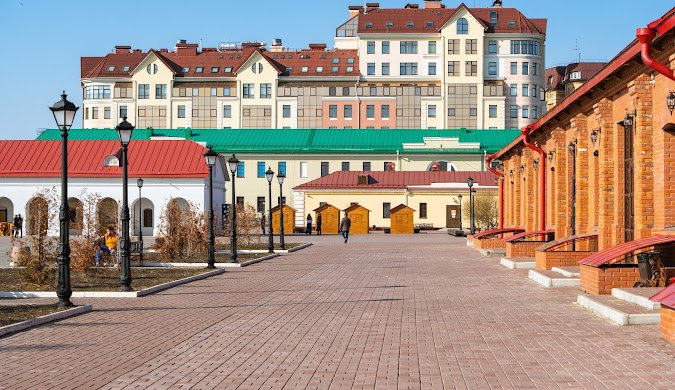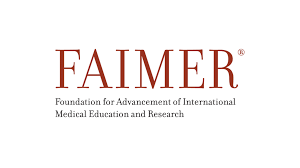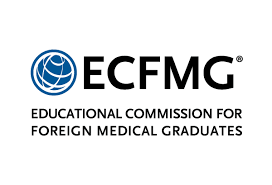




Omsk State Medical University: A Journey through History and Excellence
Establishment and Evolution: Founded in 1920, Omsk State Medical University stands as one of Siberia’s oldest educational institutions. Originating as a medical department within the Siberian Veterinary and Zootechnical Institute, it swiftly developed into the state West Siberian Institute by 1921. The university, initially known as Omsk State Medical Institute, has undergone dynamic transformations, evolving into a comprehensive medical academy in 1994 and achieving university status in 2015.
Historical Milestones: Over the years, the university has expanded its faculties and departments, reflecting a commitment to diverse medical disciplines. Notable milestones include the establishment of the Faculty of Maternity and Infancy Protection (1931, later renamed Pediatric), the Faculty of Sanitation and Hygiene (1938, now the Faculty of Preventive Medicine), and the introduction of the Faculty of Dentistry (1957) and the Faculty of Pharmacy (2002 for full-time and 2003 for part-time students).
Recognition and Achievements: The university’s contributions to medical education are underscored by its recognition as one of the largest medical universities in Siberia and Russia. It holds the Certificate of Compliance for its quality management system and consistently secures a position among the top 100 universities in Russia, according to official and independent rankings.
Educational Endeavors: Omsk State Medical University takes pride in training over 50,000 highly qualified medical and pharmaceutical specialists. With an emphasis on target enrollment (53.5% on a budgetary basis), the university attracts students from various regions, fostering a competitive and dynamic academic environment. The educational process spans specialties such as General Medicine, Pediatrics, Dentistry, Pharmacy, and Public Health at the master’s level.
Facilities and Infrastructure: The university’s commitment to modernization is evident in its infrastructure, including six dedicated buildings and 85 bases in leading medical institutions. These facilities, equipped with state-of-the-art diagnostic and therapeutic tools, contribute to a holistic and progressive learning experience.
Scientific and Medical Library: The university boasts a rich scientific and medical library with over 1,400,000 printed and electronic publications. Offering 24-hour services and free Wi-Fi access, the library aligns with modern information technology trends, providing students with valuable resources.
Scientific and Innovative Activities: Omsk State Medical University is a hub for scientific and innovative endeavors, featuring postgraduate programs, doctoral studies, research laboratories, and small innovative enterprises. The university emphasizes the effective transfer of research results, fostering a conducive environment for continuous personnel training.
International Collaborations: Since 1997, the university has actively engaged in international activities, facilitating student exchanges, international training, and collaborative projects. Partnerships with universities in China, Germany, Latvia, Luxembourg, Japan, Italy, Belarus, Moldova, Kazakhstan, and Uzbekistan underscore its commitment to global cooperation.
As Omsk State Medical University continues its journey, the fusion of historical legacy, academic excellence, and international collaboration sets the stage for a promising future in medical education and research.




Introduction: Omsk, located in southwestern Siberia, stands as the administrative center and largest city of Omsk Oblast, Russia. Nestled along the banks of the Irtysh River, it plays a crucial role as an essential transport node, serving the Trans-Siberian Railway and facilitating navigation on the Irtysh River.
Historical Significance: During the Imperial era, Omsk held strategic importance as the seat of the Governor General of Western Siberia. Notably, in the tumultuous period of the Russian Civil War (1918–1920), Omsk briefly served as the capital of the anti-Bolshevik Russian State, safeguarding imperial gold reserves.
Administrative and Cultural Hub: Omsk continues to be a significant administrative center, hosting the episcopal see of the bishop of Omsk and Tara. Additionally, it serves as the administrative seat of the Imam of Siberia. Sergey Shelest currently holds the position of mayor, overseeing the city’s affairs.
Geographical Features: Situated in the south of the West Siberian Plain, Omsk boasts an elevation of 87 meters above mean sea level at its highest point. The city thrives along the confluence of the north-flowing Irtysh and the Om River. Its strategic location makes it a vital junction for the Trans-Siberian Railway, connecting the northern and southern branches.
Transportation Hub: Omsk’s significance extends to transportation, acting as a major hub for the Trans-Siberian Railway and serving as a pivotal point for the regional highway network. River-port facilities contribute to its connectivity, allowing navigation along the Irtysh and Ob River. Tsentralny Airport further enhances its accessibility, providing domestic and international flights.
Climate Overview: Omsk experiences a humid continental climate characterized by distinct seasons. Winters are prolonged, dry, and exceptionally cold, with temperatures dropping as low as −45 °C (−49 °F). Summers, though brief, are sunny and warm, occasionally reaching temperatures as high as +40 °C (104 °F). The city sees over 300 sunny days annually, fostering a climate of extremes.
Strategic Location: Strategically positioned, Omsk is approximately 450 km north of Kazakhstan’s capital, Astana, and 600 km west of Siberia’s largest city, Novosibirsk. This central location enhances its role as a key player in regional and international connectivity.
Cultural and Economic Connectivity: Omsk’s waterways connect it with neighboring regions, facilitating trade with coal and mineral-mining towns in Kazakhstan and supporting the resource industries of northern Siberia. This economic vibrancy, coupled with its aviation connectivity, positions Omsk as a crucial hub for Siberia and the Russian Far East.
Conclusion: In the heart of Siberia, Omsk stands not just as a city but as a historical, administrative, and economic focal point. Its rich heritage, strategic location, and diverse economic activities contribute to its significance in the Siberian landscape.
UniRank Web Popularity Rankings Showcase Omsk Universities’ Success
Overview: The 2020 UniRank global ranking of web popularity encompassed over 14 thousand universities across 200 countries. Notably, 373 Russian universities, including seven from Omsk, secured positions in this comprehensive evaluation. The UniRank methodology relies on five key indicators: site traffic, the number and significance of referring resources, volume of domain citations, cross-links, and depth of web resource browsing. An essential feature of UniRank is the use of data provided by independent web analysts, ensuring result objectivity.
Omsk Universities’ Progress: Two Omsk universities exhibited notable improvement in their web rankings over the year. Omsk Pedagogical University advanced 16 places among Russian universities, ascending from 103rd to 87th (overall ranking rising from 3927 to 3675). The Technical University secured an impressive 74th place (overall ranking improving from 3478 to 3309).
Inclusion of Omsk Universities: Several Omsk universities gained recognition in the UniRank web resources ranking. F. M. Dostoevsky University claimed the 117th spot in the Russian list and 4207th globally. Omsk State Agrarian University named after P. A. Stolypin secured the 192nd and 5353rd positions, respectively. Omsk State Medical University attained the 196th position globally, ranking 5396th overall. OmSUPS claimed the 248th spot, with a global ranking of 6328. Siberian State University of Physical Culture achieved the 330th position, ranking 8808th globally.
Global Recognition: This collective achievement positions these universities among the top 15% globally, reflecting their international prominence in web popularity.
The UniRank web ratings serve as a testament to the digital presence and influence of Omsk universities on the global stage.





Establishment: Founded in 1921, OMSK State Medical Academy stands as a venerable institution dedicated to shaping the future of medical professionals.
NEET Requirement: Aspiring students must fulfill the NEET (National Eligibility cum Entrance Test) requirement, underscoring the institution’s commitment to academic excellence.
Language of Instruction: The preferred language of instruction in classrooms is English, facilitating a conducive learning environment for international students.
Accreditations and Approvals: OMSK State Medical Academy holds approvals from prestigious bodies, including the National Medical Commission (formerly MCI), World Health Organization (WHO), and the Russian Government. These endorsements testify to the institution’s adherence to international standards.
MBBS Course Duration: The MBBS course spans a comprehensive six-year period, ensuring a thorough and well-rounded education for students.
NEET Eligibility for Indian Students: Mandatory for Indian students, NEET serves as a benchmark for admission, ensuring a competitive and qualified cohort.
MBBS Eligibility Criteria: Prospective students must meet specific eligibility criteria, including:
Reasons to Pursue MBBS at Omsk State Medical University:
State-of-the-Art Facilities:
Hostel Living Conditions:
Quality Medical Programs:
Renowned for MBBS Programs:
Emphasis on Physical Training:
Extensive Sports Facilities:
Creative Opportunities:
Rich Medical Library:
These factors collectively contribute to a comprehensive and enriching academic and living experience at Omsk State Medical University.




Fostering a Vibrant Campus Life at Omsk State Medical University
Creating a Sociocultural Tapestry: An integral aspect of enhancing educational quality is cultivating a positive sociocultural environment at the university. Omsk State Medical University thrives on a rich tapestry of traditions and events that bring over 2,000 participants together annually.
Unity Through Traditions: Traditional creative evenings, including “Initiation as a Student,” “New Year’s Ball,” and “Student Spring,” serve as catalysts for student unity. These events, coupled with the active engagement of amateur artistic groups and interest clubs, contribute to the cohesive spirit among students.
Artistic Achievements: Omsk State Medical University students shine on the regional stage of the Russian Student Spring festival, often receiving laurels for their artistic prowess. The university’s commitment to the fusion of culture and academia is evident in these celebrations.
Excellence in Sports: The university’s commitment to physical well-being is evident in its success at the festival of medical and pharmaceutical universities in Russia, emphasizing “Physical culture and sports – the second profession of a doctor.” The university consistently secures prizes, and students can participate in various sports sections at the university sports club.
Civil and Patriotic Engagement: Students actively participate in civil and patriotic events, including “Historical and Medical Intellectual Games,” the “Symphony of Languages” festival, and visits to museums and exhibitions. Notably, students contribute to the “Medical Volunteers” association, engaging in charitable concerts, collecting items for orphanages, and supporting national projects like “Health” and “Demography.”
Promoting Mercy and Compassion: The Omsk regional charitable public organization “Society Mercy” operates within the Omsk State Medical University college. Its mission is to instill mercy and compassion, offering social, medical, and psychological support to vulnerable elderly individuals living alone and disabled children.
Educational Initiatives: Educational events are a staple at Omsk State Medical University. Historical reconstructions of significant wartime battles, participation in military-patriotic games, and winning youth project competitions showcase the commitment to holistic education. Student projects on eye health, environmental awareness, and information accessibility received grants at the RITM youth forum.
Campus Facilities: The university provides six dormitories for nonresident students and boasts its sports and recreation center in the countryside, promoting a balanced lifestyle.
Extracurricular Talents: Extracurricular activities offer a platform for students to explore diverse talents. Well-known entities like the KVN student club “Agar” and dance ensembles “Inspiration” and “Fantasy” contribute to the vibrant cultural landscape.
Empowering Student Governance: Student government bodies play a crucial role in socialization and labor education. Strengthening each year, they increasingly influence student life, fostering a sense of responsibility and leadership.
In summary, Omsk State Medical University’s commitment to a robust sociocultural environment goes beyond academics, enriching the student experience and preparing individuals for a well-rounded future.
1st Semester:
2nd Semester:
3rd Semester:
4th Semester:
5th Semester:
6th Semester:
7th Semester:
8th Semester:
9th Semester:
10th Semester:
11th Semester:
12th Semester:
Eligibility criteria for MBBS admission at the University adhere to the guidelines set by the National Medical Commission (NMC) for Indian students. The requirements are outlined below:
Academic Performance:
NEET Qualification:
Age Requirement:
Hostel and Dining Facilities at Omsk State Medical Academy:
Accommodation:
Dormitory Amenities:
Internet Access:
Room Furnishings:
International Student Dormitories:
Catering Services:
Hot Water Facility:
Cost-Effective Facilities:
Security Measures:
These facilities contribute to a comfortable and conducive living environment for students at Omsk State Medical Academy.
Step 1: Initial Counseling
Step 2: Submission of Application
Step 3: Payment of Application Fee
Step 4: University Admission
Step 5: payment of 1st year Tuition Fees
Step 6: payment of Visa Processing & Documentation Charges
Step 7: Invitation Letter
Step 8: Visa Application
Step 9: Payment of Consultancy Service Charges
Step 10: Purchase of Air Ticket
Step 11: Document Safety
Step 12: Airport Reception and Briefing
Step 13: Arrival and Enrollment
Documents Required:
To ensure a smooth MBBS admission process Indian students are required to submit the following documents. Please note that all documents must be translated into Russian and duly certified at a consular department of the embassy (This will be taken care by RICH GLOBAL EDU)
Educational Documents:
NEET Exam Related:
Identification and Travel Documents:
Photographs:
Health and Safety Documents:
Ensuring that these documents are properly translated and certified is crucial for a successful application process.
Tution Fees Per Year: RUB 2,19,720
Hostel Fee, Medical Insurance, Visa Extension: 1000 USD
Notably, any one-time charges have been excluded for simplicity and ease of understanding.
*Food/Indian Mess Cost = 100 to 120 USD Per Month
Additional Expenses only in 1st year
| Expense Component | Cost (INR) |
|---|---|
| Application Fees | INR 10,000 |
|
Documentation & Visa Processing Charges This includes:
|
INR 1,00,000 |
| Consultancy Charges | INR 50,000 |
| Air Ticket | INR 30,000 – INR 40,000 |
Countries for MBBS Abroad
Top Universities for MBBS
FAQs
MBBS in Moldova
MBBS in Nepal
MBBS in USA
© 2024 Rich Global Edu